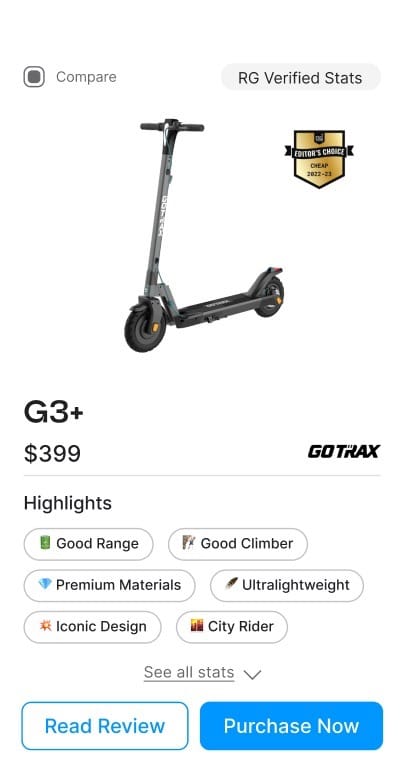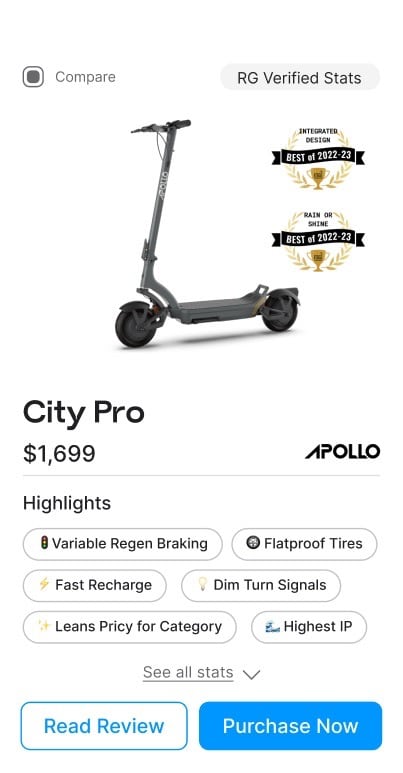
Ben Flynn
Meet Ben, your go-to scooter aficionado and in-house wordsmith at Rider Guide. With a genuine passion for two-wheelers (6 years of riding), he’s not just penning reviews but sharing firsthand experiences in an articulate narrative. You can catch him ripping through rocky trails on his Suzuki Vstrom 1000 or doing 45 miles an hour on his Dualtron Victor when he’s not busy at his writing desk, offering you the most unique and informed perspective on every scooter that rides the streets.

In the world of electric skateboarding, thrills come easy, but so do spills. Whether you’re a newbie just getting the hang of that powered deck or a seasoned rider with the scars to show for it, there’s always a curveball waiting.
By understanding these mistakes and learning how to avoid them, you can have a safe and enjoyable experience. In this article, we will explore the seven most common mistakes that new electric skateboard riders make and, of course, how to dodge them like a pro. Let’s roll!
Electric Skateboarding 101: Dodging Those Newbie Pitfalls
Electric skateboarding is not merely about hopping on the board and zooming off into the sunset. It’s an art and a skill that demands understanding and respect for the ride. New riders, often swayed by the apparent simplicity, tend to overlook the foundational aspects of electric skateboarding, leading to common mistakes that can easily be avoided with a bit of attention and care.
Know Your Ride Inside Out
First things first, that user manual that came with your board? It’s not just a piece of paper. It’s your Bible. Dive into it and understand the controls, features, speed limits, trigger settings, and wheel settings.
The Unseen Power of Modes
Some electric skateboards come equipped with various modes, each designed to cater to different skill levels and provide a tailored riding experience. From beginner modes that limit top speed and acceleration to advanced settings that unleash the full potential of your board, understanding and utilizing these modes is paramount. So, delve into the settings, explore the modes, and choose the one that aligns with your comfort and expertise.
Stance and Balance: The Unsung Heroes
Additionally, it’s crucial to take the time to learn the correct stance and balance on the skateboard. Understanding how to distribute your weight properly can make a significant difference in your overall ride quality and stability. Your feet are your primary control units on an electric skateboard.
A common mistake, especially among beginners, is improper foot positioning (to be discussed in depth later). Avoid placing both feet in the middle of the board. Instead, adopt a stance with legs wide apart, knees slightly bent, and shoulders and back straight, ensuring your eyes are always forward. Your front foot should be closer to the front truck, providing you with enhanced control over your board. While everyone’s foot placement might vary slightly, this is a solid starting point for novices.
Know Your Terrain
Smooth pavements? A dream come true. But rough or uneven surfaces? That’s where things get tricky. Always be on the lookout for potential hazards like potholes or debris. And remember, the terrain dictates the pace. So, adjust your speed and ride with caution.
While electric skateboards can manage small cracks, it’s pivotal to remember those small wheels beneath your deck. They’re not invincible and can be tripped up by obstacles, so it’s often wiser to steer clear, circumventing them to keep your ride smooth and accident-free.
Don't Push Yourself Too Hard Too Quickly

It’s natural to want to test the speed and capabilities of your electric skateboard, but it’s important to start slow and gradually increase your speed and distance over time.
Rushing can lead to accidents and injuries, especially if you’re not yet comfortable with the controls and handling of your electric skateboard. Now, rushing into things can lead to some nasty accidents and injuries, especially if you’re not yet comfortable with the controls and the handling of your electric skateboard.
So, here’s the deal: First off, start by riding at a slower pace, and find yourself a nice, controlled environment to practice in. Get the hang of turning, braking, and accelerating smoothly. It might not be as thrilling as going full-throttle right away, but it’s essential for building a solid foundation. As you gain confidence and your skills improve, that’s when you can start cranking up the speed and venturing into more challenging terrain. Remember, it’s better to progress steadily and safely rather than risk your safety by trying to do too much too soon.
Not Wearing the Appropriate Safety Gear

When it comes to electric skateboarding, safety should always be a top priority. Many new riders make the mistake of not wearing the appropriate safety gear, which can result in serious injuries. Not wearing the proper safety gear can be a big mistake. While the allure of feeling the wind in your hair and the freedom of the ride is understandable, prioritizing safety should always be the foremost concern.
First things first, invest in some top-notch protective gear. That means a solid helmet, knee pads, elbow pads, and wrist guards. These things are your best friends when it comes to preventing head injuries, fractures, and those nasty abrasions in case you take a spill.
Now, let’s talk about your feet.
The right footwear is crucial. Don’t even think about loose or open-toed shoes – they’re accidents waiting to happen. Instead, go for some sturdy, closed-toe shoes. You want something that’s got a good grip and supports your feet.
Not Knowing How to Turn Properly
Steering an electric skateboard involves controlling its direction of movement while maintaining balance and stability. Here’s a step-by-step guide on how to steer an electric skateboard effectively:
Foot Placement and Stance

Regular Stance: In a regular stance, your left foot is placed at the front of the skateboard, perpendicular to the board’s length, while your right foot is positioned at the back, angled slightly in the same direction.
Goofy Stance: In a goofy stance, it’s the opposite. Your right foot becomes your front foot, positioned perpendicularly to the board, while your left foot is at the back.
Understand Toe-Side and Heel-Side
For Regular Riders:
Toe-Side: This is turning to your right. To initiate a toe-side turn, lean your body weight over your toes and apply some pressure to the edge of the deck. To maintain your center of balance, you can bend your knees slightly as you do this.
Heel-Side: This is turning to your left. To initiate a heel-side turn, lean your body back over your heels and apply pressure to the outside edge of the deck.
For Goofy Riders:
Toe-Side: This is turning to your left. To initiate a toe-side turn, lean your body weight over your toes and apply pressure to the edge of the deck.
Heel-Side: This is turning to your right. To initiate a heel-side turn, lean your body back over your heels and apply pressure to the outside edge of the deck.
Carving
Carving is a fundamental turning technique for electric skateboards, regardless of your stance. It involves making gradual and controlled turns by leaning in the direction you want to go. The amount of lean you apply determines the sharpness of the turn.
For gentler turns, lean less, and for sharper turns, lean more. Finding the right balance of lean is key. Avoid excessive leaning, which can lead to instability and potential falls. Conversely, too little lean may cause your turns to be too shallow. Practice developing a feel for the ideal amount of lean for various turns.
Practice Wide Turns
If you’re new to electric skateboarding, start by practicing wide turns. These are easier to control and provide better stability. As you become more comfortable, you can progress to making tighter turns.
Look Ahead
Keep your gaze fixed on your intended path. Looking in the direction you want to go helps you anticipate and plan your turns effectively. This also enables you to maintain awareness of potential obstacles or hazards.
Experiment with Speed
The speed at which you make a turn impacts its feel and stability. Slower speeds make for tighter, more controlled turns, while higher speeds result in wider, sweeping turns. Experiment with different speeds to get a sense of how your board responds to your inputs.
Combine with the Remote
Many electric skateboards come with a remote control that allows you to control acceleration, braking, and speed settings. Use the remote in conjunction with your body movements to achieve precise and controlled turns. For example, you can use the remote to adjust your speed when entering or exiting turns.
Be Mindful of the Terrain
Different terrains may require adjustments in your steering technique. Be aware of the surface you’re riding on, as rough or uneven terrain can affect your ability to steer smoothly.
Not Knowing How to Brake Properly
Proper braking is a fundamental skill that all electric skateboard riders should master, yet many new riders struggle with this aspect. In panic situations, the instinctual reaction is often to brake abruptly, which can result in a loss of control and falls. Here are some essential points to consider:
Control is Key
When it comes to braking on an electric skateboard, control is everything. Abruptly slamming on the brakes can lead to unwanted consequences, such as skidding or losing control, especially when you’re traveling at higher speeds.
Lean Back Slightly
When you’re braking, it’s a good idea to lean back slightly. This keeps your weight centered over the board and prevents you from unintentionally catapulting yourself over the front.
Now, let’s delve into some effective braking techniques:
Electric Skateboard Controller
Many electric skateboards come equipped with a controller that attaches to the board. This device allows you to have precise control over both speed and braking. Before using it, familiarize yourself with the controls and how they function. To slow down, simply press the button on the controller, engaging the brakes and gradually reducing your speed. Conversely, you can decrease your speed by adjusting the throttle.
Dragging Your Foot:

An additional braking method involves dragging your foot on the ground in front of the skateboard’s rear wheels. This action creates friction between your shoe and the ground, gradually decelerating the skateboard. Begin with light pressure and increase it if necessary. Always keep your other foot on the skateboard to maintain balance. In situations requiring an abrupt stop, you can also use your hand to grip nearby objects like fences for additional support.
Using Your Board’s Heel
An alternative technique for slowing down involves using your heel to control your speed. Start by standing firmly on the board with both feet. Place your back foot on the board’s tail and lean slightly backward.
As you begin moving forward, exert pressure on your back heel. This method allows you to slow down the board gradually. Practice is vital here; once you feel comfortable, you can confidently adjust your speed as needed.
Know Your Board
Understand your electric skateboard’s braking capabilities. Electric skateboards employ two primary types of brakes: friction brakes and regenerative brakes. Regenerative brakes, known for their efficiency and lower maintenance requirements, use the skateboard’s electric motors to slow down the wheels.
Friction brakes use pads that make contact with the skateboard’s wheels to slow them down. When the rider applies the brake, the pads press against the wheels, creating friction and decelerating the board. However, while effective, friction brakes may require regular maintenance, such as replacing worn-out brake pads.
Safety and Practice
Above all, prioritize safety and practice these braking techniques in a controlled and safe environment before venturing onto public streets or more challenging terrain. Remember that riding within your skill level is essential for a safe and enjoyable electric skateboard experience.
Not Paying Attention to the Surroundings
It’s easy to get caught up in the thrill of the ride, but being aware of what’s happening around you is crucial for your safety and the safety of others. Here’s why it matters:
Avoiding Obstacles
When you’re cruising on your electric skateboard, you need to keep an eye out for any obstacles in your path—things like potholes, debris, pedestrians, and other vehicles. Hitting an unexpected obstacle at high speed can lead to accidents.
Interacting with Traffic

If you’re riding in areas with traffic, you must be mindful of cars, bikes, and pedestrians. Follow traffic rules and signals, and always yield the right of way when necessary.
Pedestrian Etiquette
Respect pedestrians’ space. Slow down or stop if you’re approaching someone on foot. Failing to do so can lead to confrontations or accidents.
Intersection Dangers
Be especially cautious at intersections and crosswalks. Drivers may not always see you, so make sure they’ve acknowledged your presence before proceeding.
Be Visible

Make sure you’re visible to others on the road. If you’re riding at night or in low-light conditions, wear reflective gear and use lights on your board to make yourself seen.
Electronic Distractions

Avoid using electronic devices like smartphones or headphones while riding. They can divert your attention and put you at risk.
Environmental Factors
Consider factors like weather conditions and low visibility. Adjust your speed and riding style accordingly to stay safe. Remember, being aware of your surroundings isn’t just about your safety; it’s about being a responsible rider.
Not Doing Proper Maintenance on Your Electric Skateboard
Another common blunder among electric skateboard riders is failing to perform adequate maintenance on their boards. Your electric skateboard is not a “set it and forget it” kind of ride; it needs some TLC to keep performing at its best. Many new riders neglect this aspect, which can ultimately lead to mechanical issues and breakdowns. Here’s what you should pay attention to:
Regular Cleaning
Make it a habit to clean your board after rides, especially if you’ve been on dirt or rough terrain. Dust, dirt, and debris can accumulate and affect the performance of your skateboard.
Tire Pressure
If your electric board uses pneumatic tires, check the tire pressure regularly and ensure it’s at the recommended level. Proper tire pressure is crucial for a smooth ride and good traction.
Tighten Bolts

Electric skateboards have numerous moving parts, and vibrations from riding can loosen bolts. Regularly check and tighten all the bolts to prevent accidents caused by loose parts.
Battery Maintenance
Keep an eye on your battery’s health. Follow the manufacturer’s recommendations for charging and storage. Over time, batteries can degrade, affecting your board’s range and performance.
Belt or Motor Maintenance
If your electric skateboard uses a belt or motor drive, inspect them for wear and tear. Replace belts or address motor issues promptly to avoid unexpected breakdowns.
Keep It Dry
Electric components and water don’t mix well. Avoid riding your board in heavy rain or through puddles to prevent damage to the electrical system.
Professional Servicing
If you’re not comfortable with DIY maintenance, consider having your electric skateboard serviced by an experienced technician who knows the ins and outs of these boards. By taking proper care of your electric skateboard, you’re not only extending its lifespan but also ensuring a safer and more enjoyable riding experience. Remember, a well-maintained board is a reliable one.
Neglecting to Charge the Battery Regularly

Lastly, neglecting to charge the battery regularly is a mistake that can leave you stranded during rides. New riders often overlook the importance of checking and charging their electric skateboard’s battery before heading out.
Running out of battery power unexpectedly can disrupt your ride and leave you with the only option of carrying your electric skateboard back home or kicking and pushing it like a regular scooter.
To avoid this inconvenience, make it a habit to check the battery level before each ride and charge it accordingly. Charging overnight or during periods of inactivity is a good practice to ensure that you always have enough power for your excursions. Additionally, familiarize yourself with the battery’s approximate range to have a better understanding of how far you can ride before needing to recharge.
7 Mistakes New Electric Skateboard Riders Make and How to Avoid Them:Conclusion

In conclusion, electric skateboarding can be an incredible experience if approached with caution and awareness. By avoiding these common mistakes, you can enhance your safety, improve your riding skills, and maximize the enjoyment of electric skateboarding. Remember to prioritize safety, take the time to practice and familiarize yourself with your electric skateboard, and always be mindful of your surroundings. With proper preparation and knowledge, you’ll be on your way to becoming a skilled and responsible electric skateboard rider.







